Velvetleaf, Abutilon theophrasti – Identification, Uses, Control
This post may contain affiliate links. Read my full disclosure here.
Velvetleaf, Abutilon theophrasti, is a noxious weed in American farm fields, but has a long history of use for food, medicine, and fiber in China and India. It’s also a food source for many types of wildlife. We’ll discuss identification, historical uses, and control of this fuzz covered plant.

Range and Identification of Velvetleaf
Velvetleaf is native to southern Asia and was introduced to North America via India. It grows throughout the United States, and is considered a noxious weed in several states. The above ground plant parts have a distinctive odor when crushed.
Growth Habit
This wild plant plagues some corn, cotton, and soybean fields. It rambles along roadsides and railways, and in gardens and waste areas.
Abutilon theophrasti is a summer annual with a deep tap root and fibrous root system. It survives as a short lived perennial in zones 8-11. The plants are tall and leggy, covered in soft hairs. It reaches up to 8 feet tall, but most plants are in the 2-4 foot tall range.
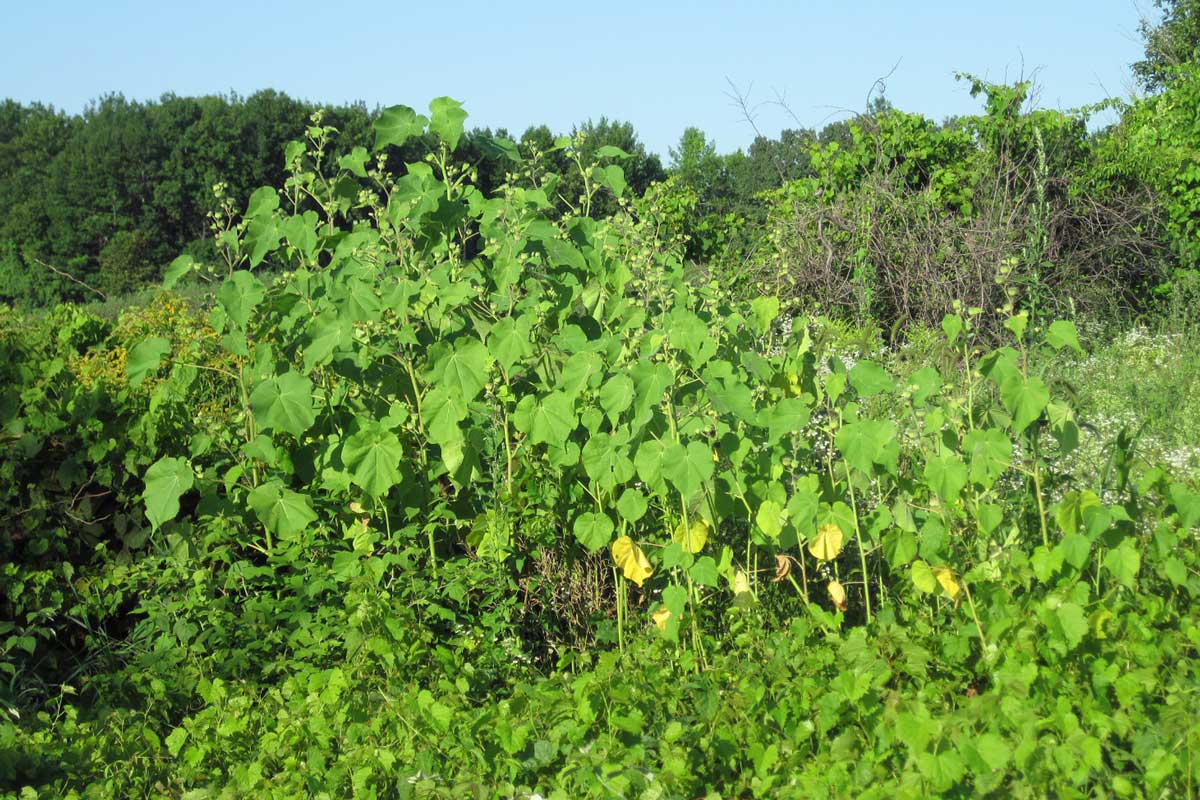
Because it is in the same family as cotton, it can act as a host plant for cotton diseases and insect pests. It has allelopathic properties, depressing germination and growth of other plants.
Leaves
Leaves are alternate, becoming larger towards the top of the plant. The large leaves reduce light penetration to surrounding plants. This leaf is about half as big as I’ve seen them get – they can reach near dinner plate size.

The heart shaped leaves are soft and velvety to the touch. In a pinch, the soft leaves work as a toilet paper substitute. (Be careful – some people get an allergic skin reaction from the plant.)
Flowers
The flowers are small, yellow, and rather inconspicuous. Each yellow to yellow orange flower has 5 petals and is 1/2 to 1 inch in diameter. They grow on the stalk where the leaf stalk meets the stem.
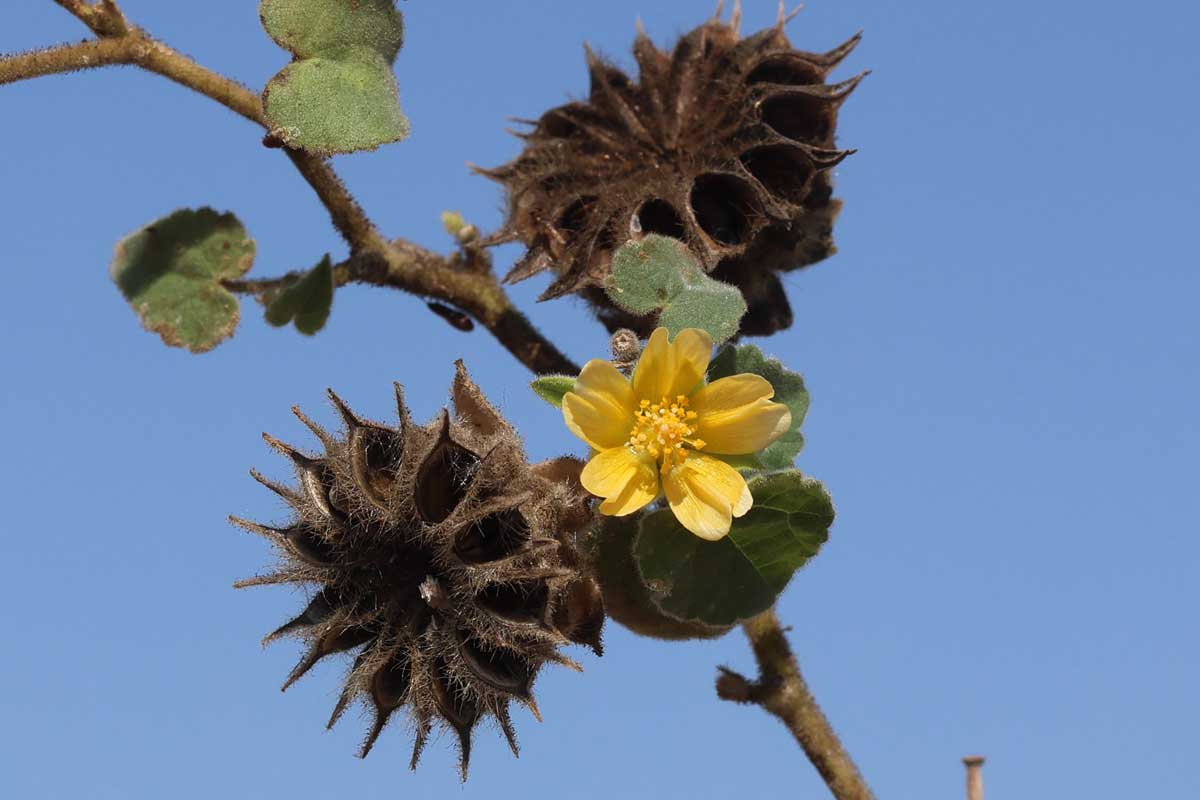
The flowers open in the morning and close later in the day.
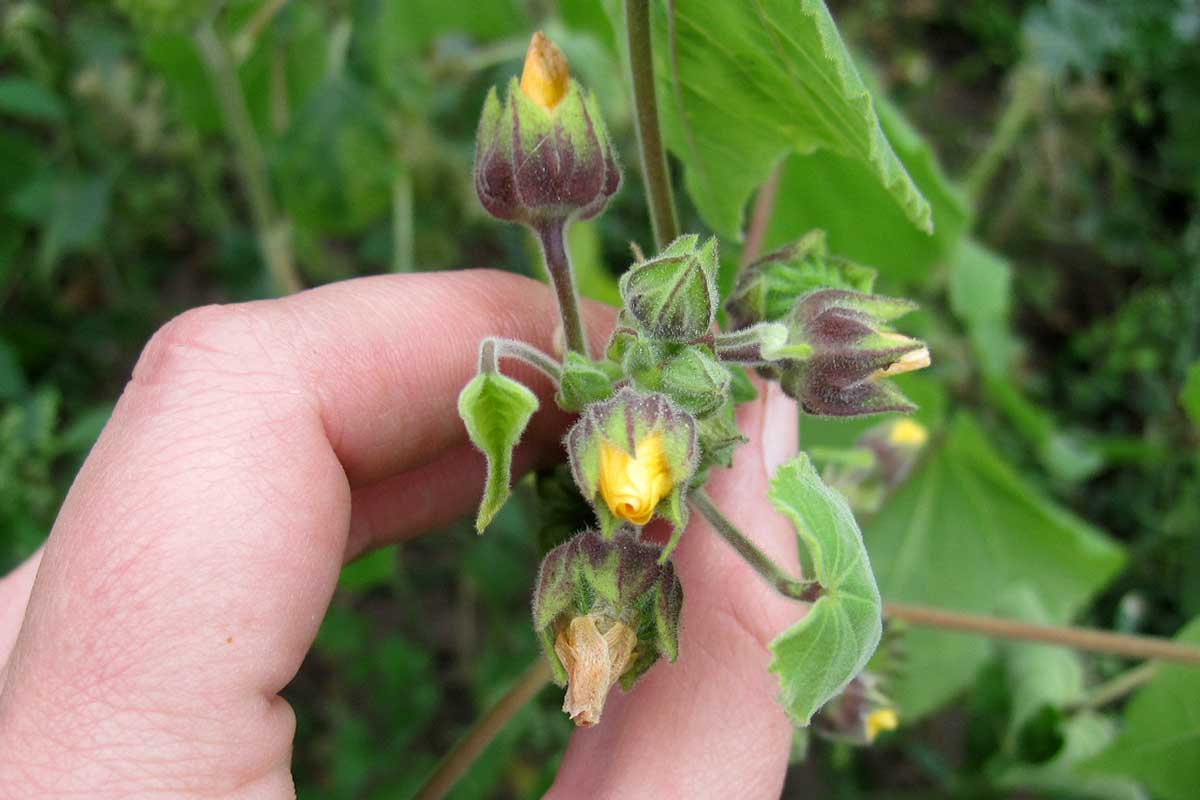
Seed Production
With up to 17,000 seeds per plant, velvetleaf is quite prolific. The seeds can remain viable in the soil for over 50 years, creating a formidable seed bank.
The seed heads are quite lovely. They are about an inch across, with 12 to 15 woody segments. The seeds release through vertical slits on the outside of the seed pods.
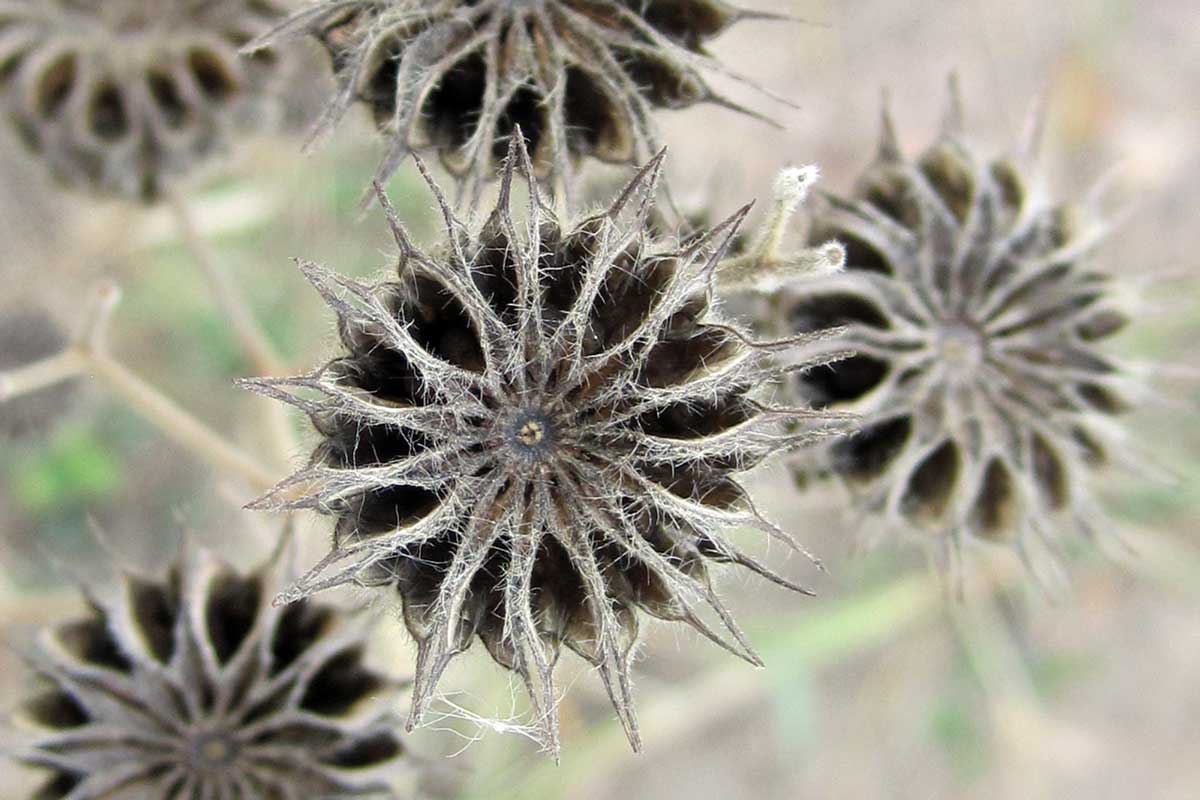
The seeds themselves are small, dark and heart shaped – and very tough. They are roughly 1/8″ across.
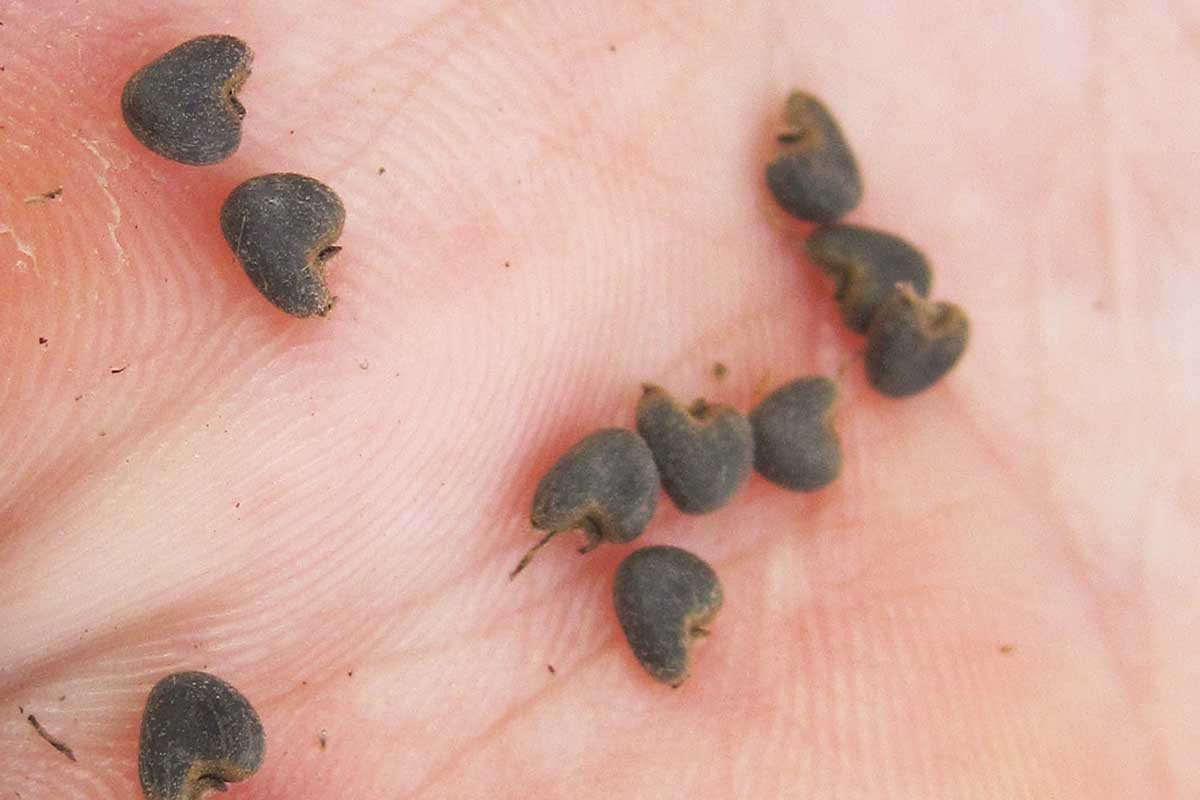
www.wssa.net explains why many farmers hate this plant and now consider it a noxious weed.
Velvetleaf seeds have tough seed coats which protect them against digestion by farm animals. In fact, experimental germination of velvetleaf seed requires scarification with 1 M sulfuric acid for 15 min or boiling for 1 min (9).
Seeds can remain viable for 50 years when stored in the soil (12); one researcher reported 43% germination after 39 yr of burial (11). The seeds and seed coats also have chemicals and microbial agents which inhibit growth of bacteria and fungi.
Velvetleaf Uses
Like many wild plants, velvetleaf was valued before it was scorned.
Fiber
Velvetleaf originated in either China or India. Its use as a fiber crop in China dates to 2000 B.C. or earlier. It is still grown there for fiber, which is used to make ropes, coarse cloth, nets, paper and caulk for boats.
Would you like to save this?
Whether as foreign material in crop seed or as an intended fiber crop, velvetleaf arrived in North America probably before 1700, and became widespread along the East Coast by the early 1700s.
Because the colonies desperately needed fiber for rope and cloth, velvetleaf was widely cultivated in the mid-1700s. Although attempts to process velvetleaf fiber never succeeded economically, U. S. farmers continued to cultivate it for more than 100 years.
Wildlife Food
Mourning doves, quail, insects, and rodents eat the abundant seeds. The nectar and pollen of the flowers attract various kinds of bees, including bumblebees, leaf-cutting bees, miner bees, and Halictid bees.
Checkered Skipper caterpillars make folded-leaf nests. The native scentless plant bug (Rhopalidae) Niesthrea louisianica, feeds on the floral buds, flowers, and seeds. Releases of this bug for biological control resulted in a significant reduction in seed viability.
Is Velvetleaf Edible?
The seeds are edible. They have a slightly nutty flavor, and are easier to chew than sunflower seeds. Under ripe seeds can be eaten raw. Ripe seed is rinsed, dried, ground, and used in recipes.
Velvetleaf Medicinal Uses
Historically, medicinal use of Abutilon theophrasti included treatment of:
- chest infections
- urethritis
- toothache
- hemorrhoids
- gonorrhea
- hemorrhaging
Also it works as anthelmintic, laxative, demulcent and diuretic. Extracts from the plant show potential for sunblock, antimicrobial, and antioxidant use.
How to Get Rid of Velvetleaf
As long time readers know, specific weeds appear when soil conditions favor their growth. Each year, the wild (and not so wild) areas of our land change a bit. The seeds are always there waiting. It’s up to us to create conditions that favor the plants we want to grow.
The soil conditions that trigger velvetleaf growth include*:
- Very low available calcium
- Very low phosphorous
- Very high potassium
- Very high magnesium
- High manganese
- High iron
- High sulfur
- High copper
- high boron
- high chlorine
- Very high selenium
- Low humus
- Low porosity
- Anaerobic bacteria dominates
- High moisture
- High salt buildup
- Sticky soil
- High aluminum
*List adapted from the book, “When Weeds Talk”.
If you look at the list, you can see that soils where this plant dominate are out of balance. We need to work on adding organic matter and improving aeration. Bone meal is a good addition for calcium and phosphorous.
For more information on a holistic approach to managing weeds, see “Get Rid of Your Toughest Weeds Permanently“.
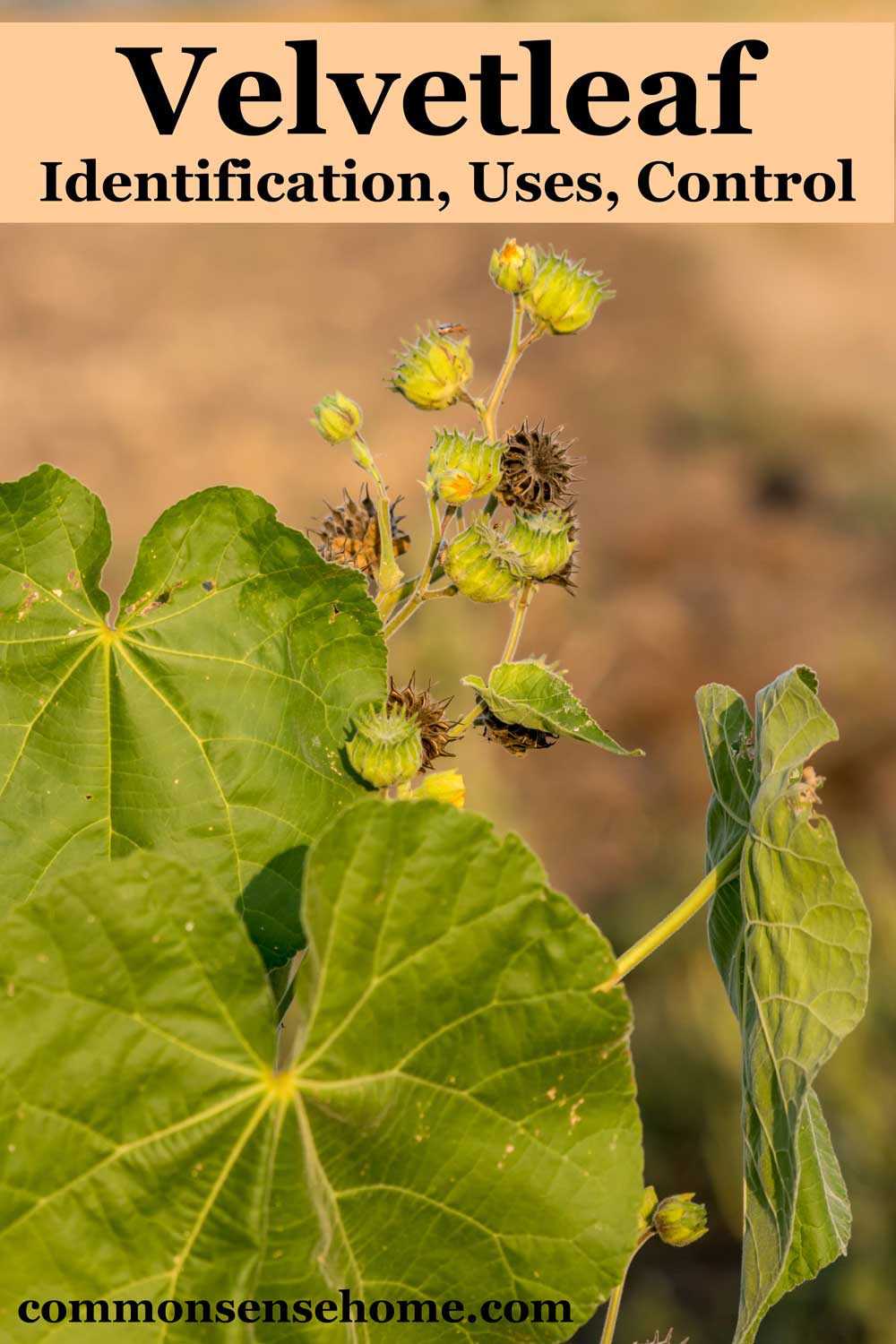
Other Names
Other common names of Abutilon theophrasti include China Jute, Buttonweed, Butterprint , Indian Mallow, Piemarker, Wild Cotton, abutilon, elephant ears, cottonweed, abutilon hemp, Manchurian jute, and American jute.
The Weekly Weeder Series
This article is part of the Weekly Weeder series, which shares how to use wild plants for food, medicine, and more.
Other popular articles in the series include:
- My Favorite Foraging Books
- Autumn Olive – Uses, Control, and Recipes
- Goldenrod – Growing, Foraging, Uses, & Control
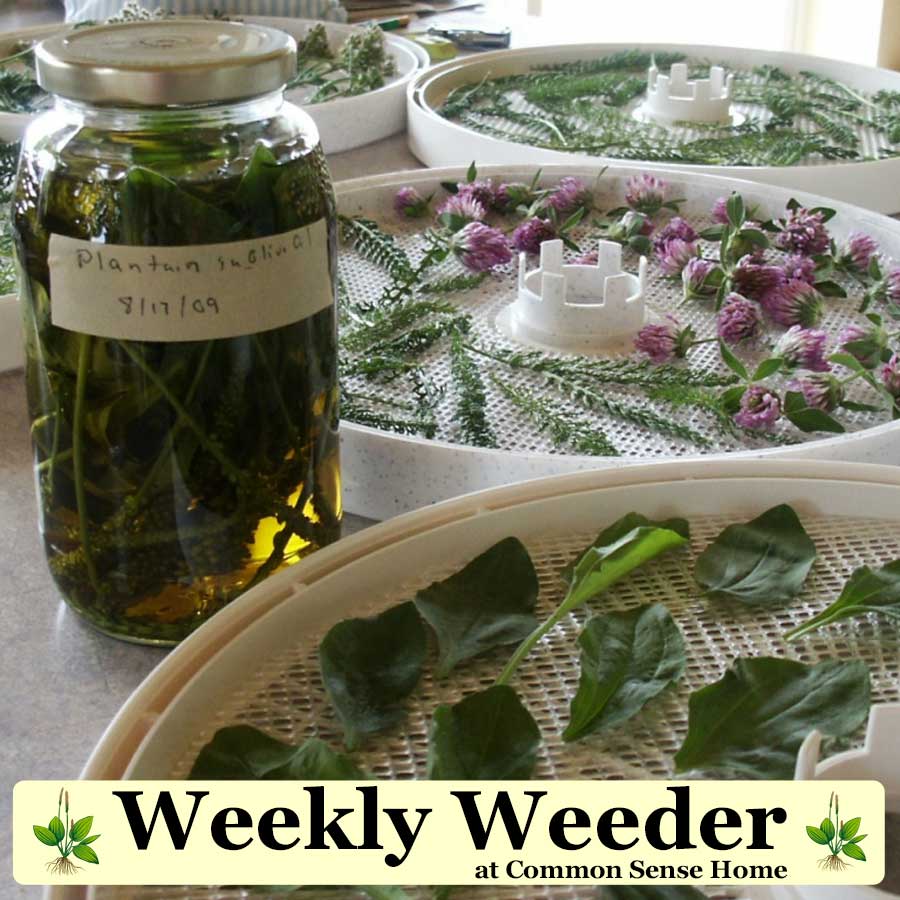

This article is written by Laurie Neverman. Laurie was raised on a small dairy farm in northwest Wisconsin, where she gathered wildflowers from the woods and pastures. She and her family now live in northeast Wisconsin, where they combine intentional plantings and semi-wild areas. Every season is a new opportunity to learn more about working with wild plants.
Originally posted in 2012, last updated in 2024.

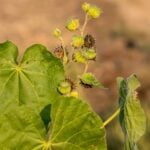
Noxious weed has a very specific meaning and I am not aware of anywhere that Velvetleaf meets that criteria.
From the University of Wisconsin Horticulture Division article on Velvetleaf:
Velvetleaf is considered to be a noxious weed in several states, including Colorado, Iowa, Oregon and Washington.
It is a particular problem in corn and soybean files in the eastern and midwestern U.S., costing hundreds of millions of dollars per year in control and damage.
Thanks for the video on nettle fiber. It was very interesting, the fiber must be similar to flax. I wonder if you could use a spinning wheel to make the twine?
I would think so, though I’m not a fiber expert.
Thanks for this article. I’ve seen a couple of these growing in my potato row. I usually pull them and I’m glad with the number seeds they have that I’ve been pulling them. For some reason I’d been thinking they were in the legume family due to the shape of their leaf but I’m thankful for the info you’ve provided. Have a great day.
Yes, mallow family, not legume. Best not to let them seed out unless they are intended for use.
What a beautiful articules in Mexico it is a very good taste for chicken
Love it. Love it
I had planted pumpkins in my garden and thought that the velvetleaf was actually a pumpkin that had not um, fallen over like the other vines. I was wrong but the plant was still useful. I am collecting the seeds to store. Glad they grow here in Wisconsin!
Waste not, want not. Next time around you’ll know sooner what’s pumpkin and what’s not. 🙂
I had these growing in my garden and I cut them down, have the stalks drying to mulch them and now I see they are good for fiber, like hemp or kenaf!! Do you know of any resources for how to convert this into fiber for making cordage or possibly to use for making baskets? I would *love* to get away from using raffia and it seems like this would be perfect.
I have yet to see anyone process velvetleaf fiber, but I suspect you could use a method similar the video below for processing nettle fibers.
Hello. I just had 3 of these pop up on a new planter this spring. They were spaced out perfectly, almost as if planted on purpose. I pulled the one in the middle but left the 2 on either end of the planter. So far, I have pulled 1 volunteer seedling from the yard from these bushes. I will continue to pull seedlings as I find them. But I think I’ll let at least 1 plant grow every year. I just fried some leaves in butter and added salt and pepper; very tasty. Also, I’m harvesting the dried seed pods for fall crafting with my mom. Since they’re not poisonous, the goats are enjoying the leaves I trim from the plants. These things get huge when they grow in pure goat poop, irrigation, and full sun.
Hi, I am from the Invasive Council of B.C. I am wondering if you have the rights to the pictures for Velvet Leaf…and if so , would it be possible for us to use them on our website?
Thanks
Yes, I have the rights to the photos, as they were taken in my yard by me. You may use them with proper attribution and a link back to the site.
I have one of these growing in my raised bed with melons & other things. So glad to find out what it is! Thank you for the good article!
You’re welcome.
The blog post I have decided to feature is: “Plums to Prunes, Chicken to Dog Treats”. We all know what plums and prunes are good for, and for those of us that are iron deficient anemic and are on high doses of iron, the things are a God-send.
I’ve found that regular consumption of coconut oil has been a help in that area for me, as well as other diet changes. More on the topic in this post – https://commonsensehome.com/whats-a-healthy-bowel-movement/
In college I took a class called ‘Flora of the Great Plains’. My professor told me that a common name for this plant was ‘Butterprint ‘ because people would press the seed heads into pats of butter. I think it was done for fancy dinner parties.
I see this all along the edges of corn and soybean fields and pretty much anywhere the soil gets disturbed.
I had wondered about the butterprint name, but hadn’t come across a reference. Thanks!
I read that the seed pod was used to make decorative designs on butter in some cultures.
Interesting. They are pretty.